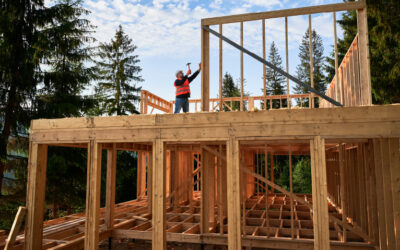The construction industry has always had its share of challenges, and this is certainly true of the present, where a myriad of challenges are confronting the market, impeding the advancement of construction projects and threatening the viability of the men and women who are responsible for building America from the ground up.
While there are countless contributors to the construction of any project, subcontractors are responsible for the actual construction activity. They provide the labor, the materials and take on much of the risk to bring projects to completion on time and on budget.
Richard Bright, Chief Operating Officer of the American Subcontractors Association (ASA) notes, “Everyone thinks the owner funds the job when in reality, they’re certainly providing the initial investment but the subcontractors are the ones that go on and build the building and pay their employees for their labor and buy the materials ahead of time, so essentially our members are funding the job.”
Bright explains that, “Subcontractors are providing the labor to build the project and get paid after the fact, so we’re bidding on the future and waiting to get paid on the work we’ve done,” which can equate to a major strain on cash flow and can threaten the economic wellbeing of the company.
Strength through representation
Representing 34 chapters nationwide, including nearly 3,000 members and 6,500 contracts within those member companies, the ASA provides representation, advocacy and education for its members to ensure its vision of “better construction through fair construction” is realized. This means addressing the issues of the day and preparing for what is to come in the future.
ASA National President, Rusty Plowman, serves as Vice President of Delta Drywall, Inc. Plowman explains that currently, “Issues include ‘paid if paid’ clauses in contracts; slow pay as the economy is moving toward a recession; getting paid for change order work on projects; and the slow process of receiving written change orders from general contractors on projects.”
He adds that, “Some states need reform on retainage from ten percent of the total contract amount and the lengthy amount of time to collect it (sometimes over a year),” which impacts cash flow.
If that wasn’t enough, subcontractors are battling what previous ASA President Brian K. Carroll, a Board Certified® Construction Lawyer with Sanderford & Carroll, referred to as “The Big Three”: supply chain delays, labor shortages and price escalation of both labor and materials, matters that were exacerbated by the pandemic and rising gas prices.
As Carroll says, “There is zero certainty that when an order is placed that the delivery date has any chance of actually occurring. Suppliers are refusing to lock in prices and owners are refusing to agree to escalation clauses, which forces the subcontractors to carry the risk of escalation beyond what is included in their bid pricing.”
He adds, “As to labor, the market continues to be very tight with a premium for skilled and even unskilled labor in certain markets. This makes it challenging to take advantage of the amount of work available.”
Currently, members have a sufficient backlog, but as Bright notes, “The question becomes, as costs increase and delays happen because of supply chain issues or [labor challenges], do contracts get put on hold? Do they start to get cancelled because the cost of doing them is exorbitant? So, in other words, we’re busy now, but the worry is in the future.”
This is particularly challenging as some projects are bid on years in advance without price escalation clauses or force majeure language included in the contracts that account for increases in price that are beyond a subcontractor’s control. Through the provision of contract language, negotiating tips, and education, ASA works to ensure that its members are able to self-advocate and negotiate contracts to include things like price escalation clauses for themselves.
From Plowman’s perspective, “The ASA is instrumental in providing the advocacy and legislation to address all issues pertaining to poor contract terms and practices in the industry. Members have access to pre-written contract language to help them negotiate fair contracts and protect their best interests when undertaking projects.”
A voice at the government level
One of the most valuable resources ASA offers is the protection of its members’ interests through government advocacy. As Carroll explains, “ASA has had a number of victories this year in the advocacy realm whereby ASA is shaping the statutory and regulatory framework to allow for a more level playing field for subcontractors in the construction realm.”
The government advocacy work of the ASA is especially important given the passage of the historic $52 billion Infrastructure Investment and Jobs Act (IIJA) and CHIPS and Science Act (CHIPS), which will have significant implications on its members and the industry.
“The IIJA includes substantial funding for federal highway, transit, highway safety, and rail programs, along with investing in new infrastructure projects across the nation,” notes Michael T. Oscar, the ASA’s Director of Government Relations. Additionally, the IIJA included an ASA-supported provision directing the U.S. Department of Transportation (DOT) to ensure public-private partnership (P3) projects using Transportation Infrastructure Finance Innovation Act (TIFIA) financing have appropriate payment and performance security bonds.
The same can be said about the CHIPS Act, though it is less substantive in scope and reach. It will lead to the construction of facilities that will mitigate the shortage of semiconductors and the impact it is having on supply chains globally, and again, will put ASA members to work.
“Beyond our legislative efforts at the federal level, ASA supports its chapters at the state and local levels of government.” For Oscar, “We believe if we can effect change at the 30,000-foot level—that is working with the federal government—then that precedent will eventually trickle down to the state and local level impacting our chapters and membership.”
Whether it is a retainage issue in Colorado, prompt payment matters in Pennsylvania, or concerns about public-private partnerships in the D.C. Metro Area, ASA stands up for its members wherever they are.
Looking forward
For Bright, “Looking forward and having the ability to look forward is important,” and this is especially true as the economy enters a technical recession. As such, ASA is already getting ahead of the curve to prepare its members to navigate potentially challenging times.
Beyond economic challenges, Carroll notes that, “Going forward, it will take some of the best and brightest to take the industry into the future as we continue to evolve with environmental concerns, population growth, and innovative new construction technologies,” and luckily, ASA will steadfastly be there to represent its members regardless of the challenges they may face.
“We’ve overcome many legislative, regulatory, and political hurdles in the past and we’ll continue to overcome them in the future,” says Oscar, with optimism backed by confidence that the Association’s members are poised to ride out the challenges and make the most of the opportunity before them, with the resources and support of the ASA.













